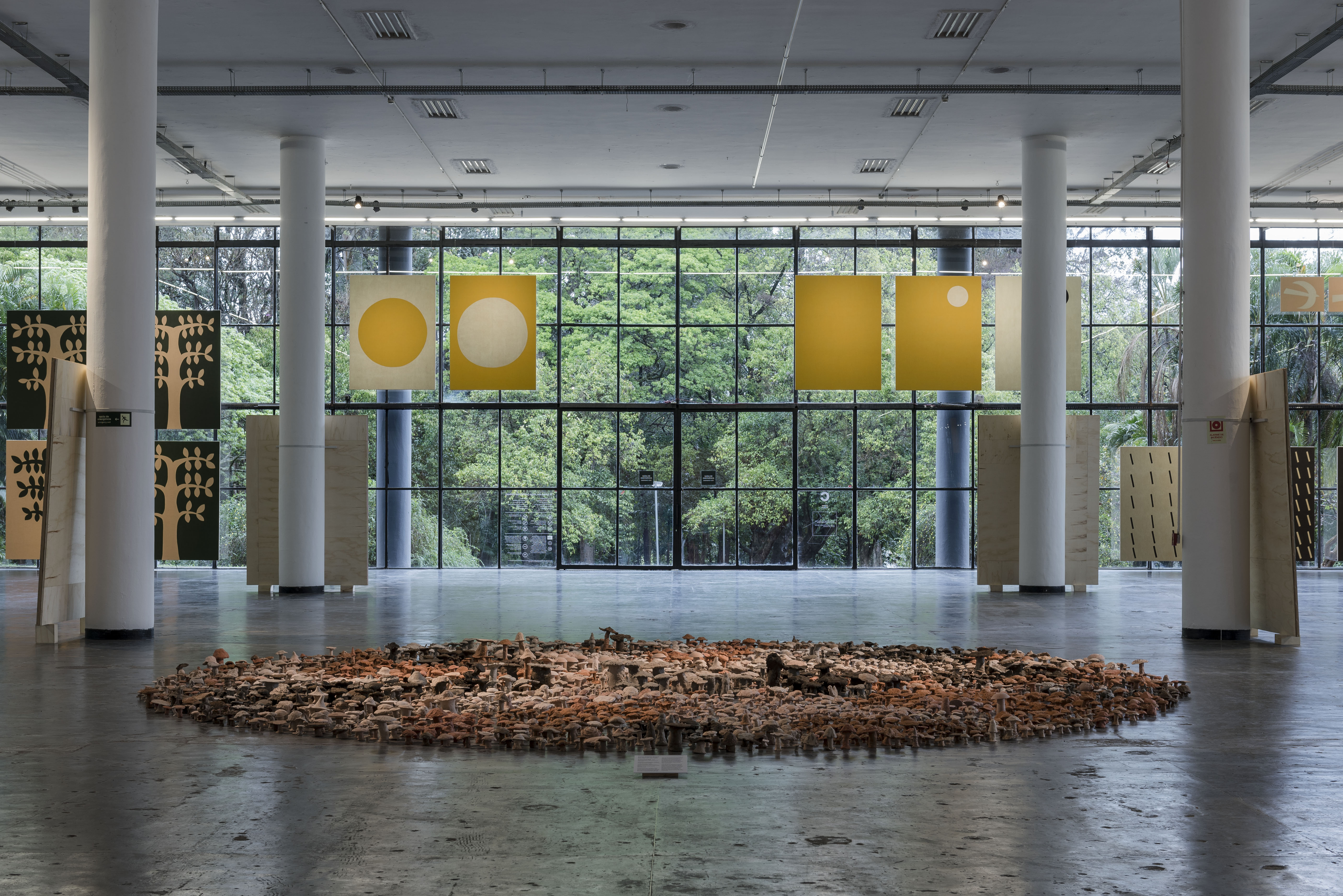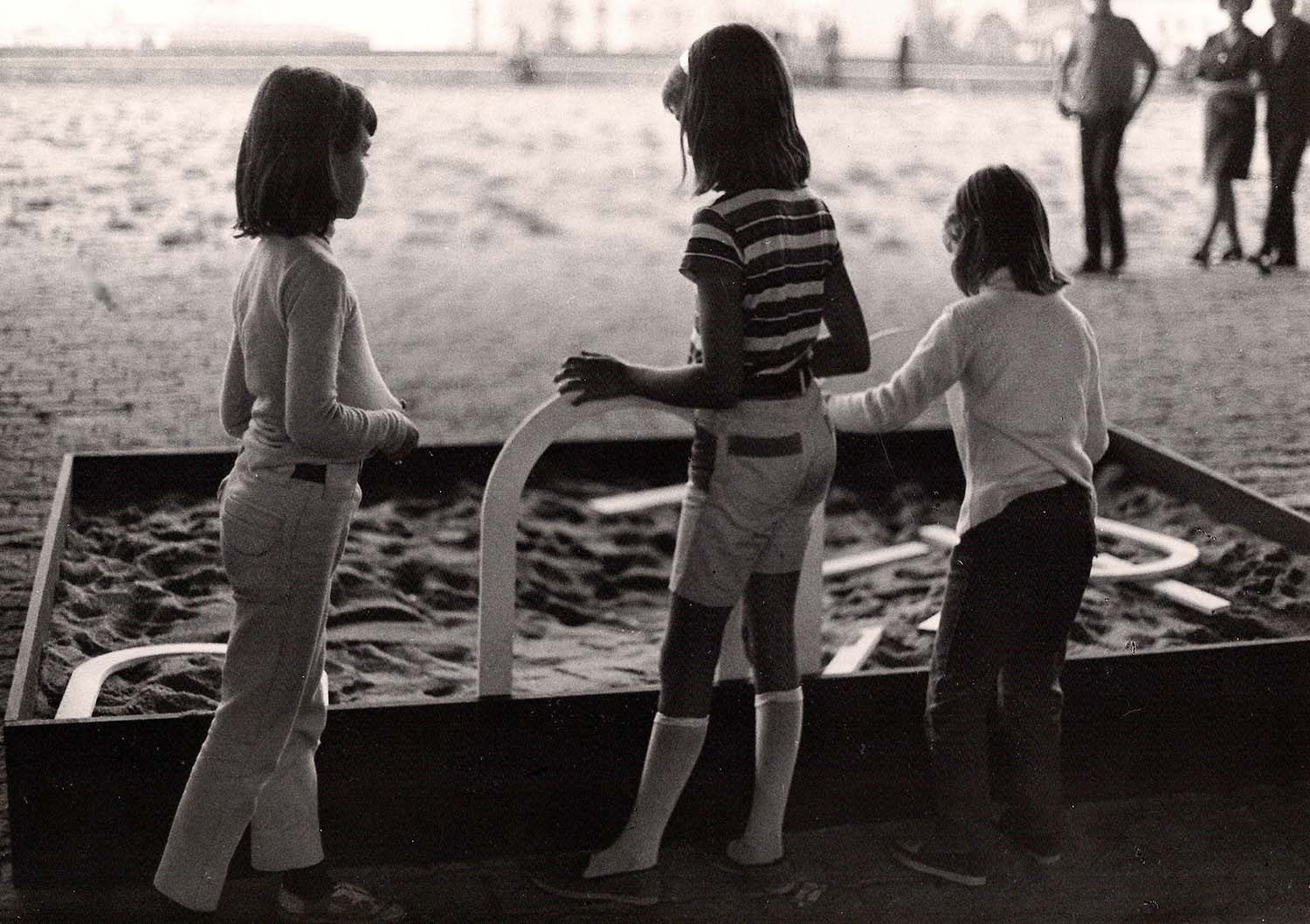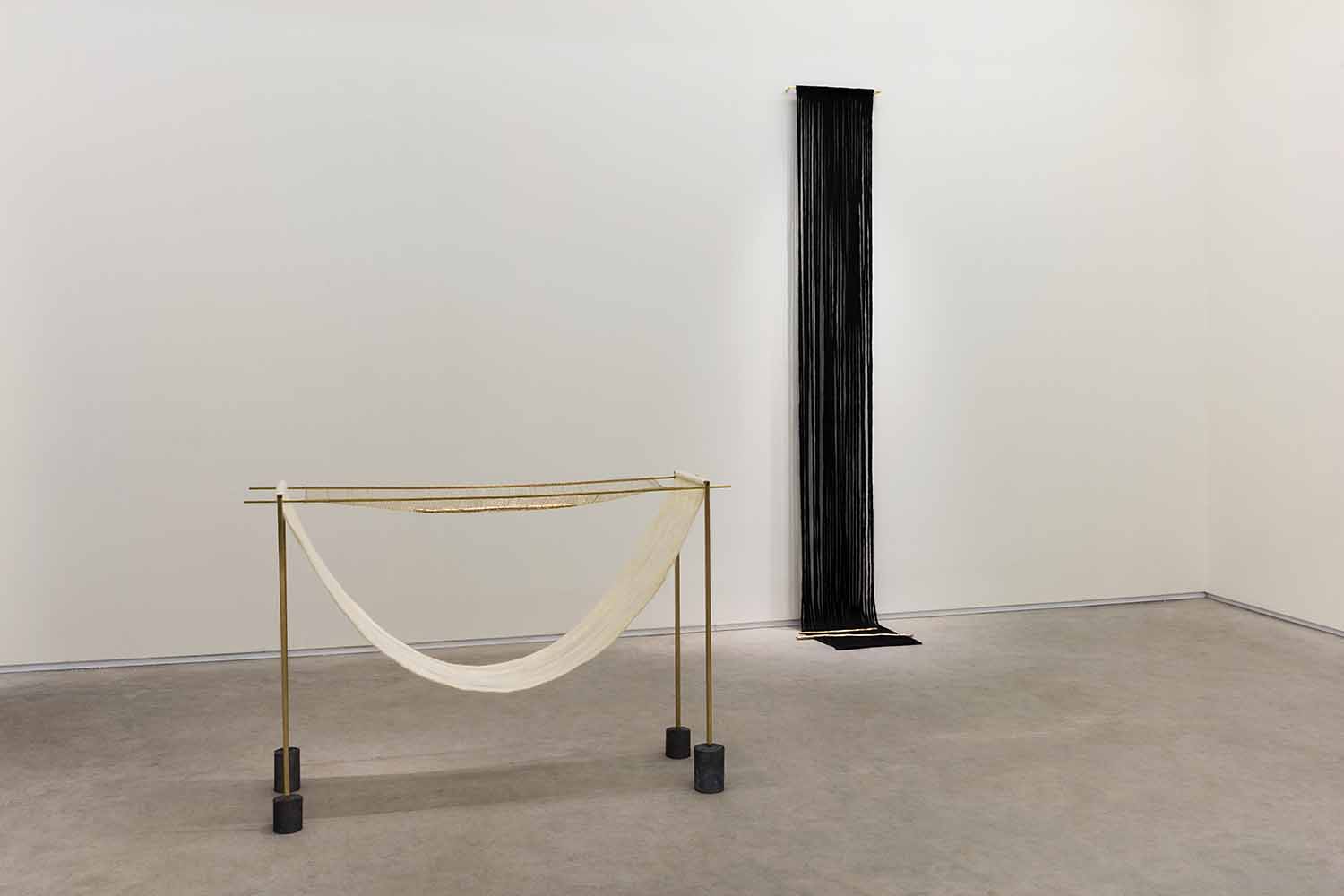A walk under the Oscar Niemeyer–designed marquise is one way to arrive at the MAM in São Paulo’s Ibirapuera Park. The site has been used for decades by skaters, who cherish it for its protection against summer downpours and its smooth concrete flooring. The museum itself, designed by architect Lina Bo Bardi in 1982, features a mirrored glass façade toward the park, which attracts groups of teenage hip-hop dancers. Now “Dancing Museum,” which draws forty works from the permanent collection, explores aspects of movement. As part of a cross-disciplinary approach, the pieces accompany a series of new choreographic works by the São Paulo Companhia de Dança that occasionally unfold throughout two museum galleries.
The smaller gallery features a small stage with a makeshift auditorium. On the back wall a living room set — complete with a wooden sofa, armchair, coffee table and reading lamp — is mounted at a ninety-degree angle. Accompanied by break beat electro, piano and Morse code sounds, the dancers enter the stage on roller blades, wearing evening gowns or street wear that all sport the obligatory glitter.
Located near the entrance to the main gallery is one of the few performance pieces in the MAM’s collection, Laura Lima’s Palhaço com buzina reta – monte de irônicos(2007), which features an actor in clown costume seated on the floor. The performance opens to a scenario of installations, many of which are suggestive of props. Some of them remain unanimated. Others — such as Nic Guagnini’s rotating doors Maquina Curatorial (2009), two of Daniel Steegmann Mangrané’s curtains (2013), Opavivará’s beach chair installation Espreguiçadeira múlti (2010) and Maurício Dias & Walter Riedweg’s three-channel video installation on baile funk rituals in Rio de Janeiro, Do universe do baile (2008) — are toyed with or acted upon by the dancers.
Dance and performance have played a major role in Brazilian contemporary art since Hélio Oiticica’s Parangoles (1968). However, while avant-garde dance has explored the use of sculpture since the 1960s — consider Simone Forti’s work for example — “Dancing Museum” remains on the level of allegory when its presented sculptures are “activated.”





